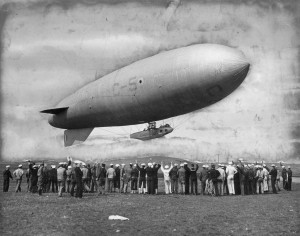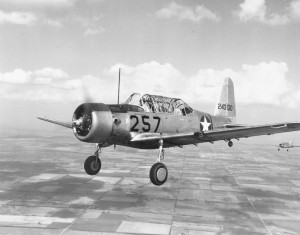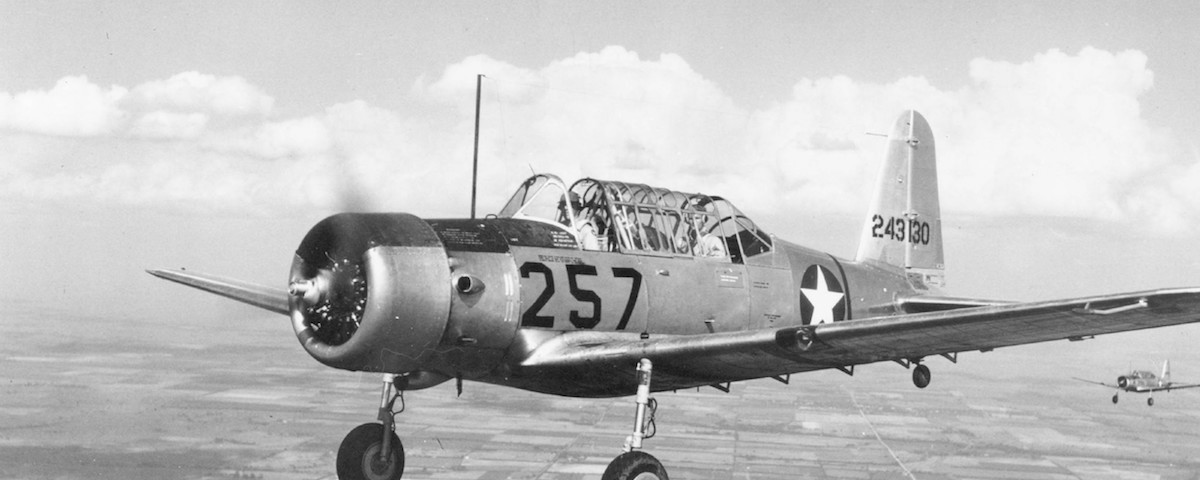Throughout history, countless records have demonstrated man’s fascination with flight. While the true origin of this quest to fly has long been lost, the reason behind it is quite obvious. As humans, we are hardwired with the desire to see the world, to visit the great landscapes that we have yet to lay eyes upon.
Having the ability to fly allows us to reach these places, and reach them fast. While the first untethered human flight occurred in the late 1700s, ideas and designs for man-carrying flight contraptions can be traced to as far back as 428 BC. Let’s take a quick look at the past achievements that have led to the advanced aviation technologies of today.
Archaic origins
 Stories of people attempting to fly can be found throughout various ancient cultures. In Greek mythology there is the legend of Daedalus and Icarus, the father and son who created wings by combining feathers and wax. The story may have ended in tragedy, but it showed that men have always wanted to fly. Similar stories can be found in India, China and Europe.
Stories of people attempting to fly can be found throughout various ancient cultures. In Greek mythology there is the legend of Daedalus and Icarus, the father and son who created wings by combining feathers and wax. The story may have ended in tragedy, but it showed that men have always wanted to fly. Similar stories can be found in India, China and Europe.
In 852 AD, Armen Firman of Spain covered his body with feathers and created wing-like garments that he attached to his arms. He then proceeded to jump from a tower. Although his attempt was unsuccessful, the garments slowed his descent, allowing him to survive with only minor injuries.
Kites, which had been invented in China sometime in the 5th century, are known as the first aircraft made by man. Man-lifting kites where were also utilized in China and Japan for military and punishment purposes. China is also credited with inventing hot air balloons (3rd century BC) and rotor wings (400 BC).
The Renaissance in Europe, from the 14th to 17th century, witnessed a creative explosion in architecture, art, music, politics and science. Famous Renaissance artist and inventor Leonardo da Vinci developed the early drafts for a rational aircraft. Among his inventions were the parachute and the aerial screw. While his ideas were not scientifically sound, they were at least reasonable.
The age of modern aviation began during the 1700s, and came to embody to main categories: lighter-than-air aviation and heavier-than-air aviation.
Lighter than air aviation
 This type of aviation mainly involved balloons and airships. On June 4, 1783, brothers Joseph-Michel and Jacques-Étienne Montgolfier exhibited their unmanned hot air balloon, which flew over Annonay, France. By August 27 of the same year, brothers Anne-Jean and Nicolas-Louis Robert, along with Jacques Charles, flew their unmanned hydrogen-filled balloon over Champ de Mars, Paris.
This type of aviation mainly involved balloons and airships. On June 4, 1783, brothers Joseph-Michel and Jacques-Étienne Montgolfier exhibited their unmanned hot air balloon, which flew over Annonay, France. By August 27 of the same year, brothers Anne-Jean and Nicolas-Louis Robert, along with Jacques Charles, flew their unmanned hydrogen-filled balloon over Champ de Mars, Paris.
On October 19, the Montgolfier brothers sent up a manned flight with a tethered hot air balloon piloted by Giroud de Villette, Jean-Baptiste Réveillon and Jean-François Pilâtre de Rozier. Then, on November 21, the brothers launched their first untethered flight with Pilâtre de Rozier and François d’Arlandes onboard. The balloon was lifted by hot air from a wood fire and flew a total of nine kilometers in 25 minutes. Despite having enough fuel to fly for a longer duration, the two aeronauts had to land because the firewood’s embers began to burn the fabric.
Hot air balloons suffer from a disadvantage, however: lack of maneuverability. The invention of airships, otherwise known as dirigibles or zeppelins, solved this issue. Dirigibles derive lift from hydrogen or helium gas instead of from heat. These airships were the first to carry passengers over long distances. Perhaps the most famous were the dirigibles manufactured by German airship company Luftschiffbau Zeppelin GmbH. Airships are classified into three categories:
- Non-rigid – Also known as blimps, they lack a solid wood or metal framework. They basically consist of envelopes filled with gas, with a small gondola attached below.
- Semi-rigid – An airship with a solid supporting structure that only runs on the bottom part of the ship’s interior.
- Rigid – These airships have a full internal framework, usually constructed from wood or some type of metal, covered with an envelope. One or more gasbags inside provide lift.
The age of lighter-than-air aviation waned with the development of better airplane designs. On May 6, 1937, the zeppelin Hindenburg burst into flames and crashed to the ground at Lakehurst, N.J., killing 22 crewmen, 13 passengers and a ground worker. The accident would mark the end of the airship era.
Heavier than air aviation
 There had been various contenders for the title of having developed the first true heavier-than-air aircraft, and more than a little controversy surrounding the various claims. On October 9, 1890, French inventor Clément Ader made one of the first powered flights. His “flight” was only 20 centimeters above the ground but covered a total distance of 50 meters, which was quite significant at the time.
There had been various contenders for the title of having developed the first true heavier-than-air aircraft, and more than a little controversy surrounding the various claims. On October 9, 1890, French inventor Clément Ader made one of the first powered flights. His “flight” was only 20 centimeters above the ground but covered a total distance of 50 meters, which was quite significant at the time.
However, the official and most universally accepted date that kickstarted aviation as we know it today is December 17, 1903. On that day Orville and Wilbur Wright made four flights in their Flyer, the longest of which lasted 59 seconds and covered 852 feet. The Wright brothers’flights combined both power and control, setting a new standard for aviation.
The world’s first scheduled passenger air service began in Florida on January 14, 1914. It operated between St. Petersburg and Tampa. Despite only lasting for four months, the flights helped pave the way for modern-day transcontinental service.
The 1920s and 1930s were a time of explosive growth in civil aviation. Revolutionary aircraft designs such the Douglas DC-3 — a reliable all-metal passenger airplane — helped make air travel more accessible and comfortable for the public.
Post-World War II civil aviation
By the end of World War II, many towns and cities had built their own airports. Civil aviation experienced rapid growth during this period, as military aircraft were repurposed as airliners or personal planes.
In 1944 the Convention on International Civil Aviation, aka the Chicago Convention, was established. The agency’s goal was to standardize the efficiency, safety and consistency of all civil flights. Today that standardization has paid off in safer, more economical airliners operated by the major carriers. Europe-based Airbus, U.S.-based Boeing, Brazil-based Embraer, Russia-based United Aircraft Corporation and Canada-based Bombardier are five of the top aircraft manufacturers today.
The era of digital aviation
 With the emphasis during the modern era on adopting digital or computerized techniques, the aviation industry has really taken off. During the 1970s, computer-aided design and computer-aided manufacturing (CAD/CAM) software enabled the creation of better aircraft designs. Computer simulations have also led to the discovery of better materials for creating lighter and stronger airplanes.
With the emphasis during the modern era on adopting digital or computerized techniques, the aviation industry has really taken off. During the 1970s, computer-aided design and computer-aided manufacturing (CAD/CAM) software enabled the creation of better aircraft designs. Computer simulations have also led to the discovery of better materials for creating lighter and stronger airplanes.
Digital systems have found their way inside the modern aircraft, rendering most mechanical and analogue instruments obsolete. An example of this is the “glass cockpit” employing LCD screens instead of the mechanical gauges and dials.
JustFly!
Countless aviation developments are currently ongoing, with the goal of providing a safer, faster and more comfortable air travel to the general public. With the growing number of airlines selling cheaper flight tickets, traveling by air has never been easier or more affordable.
If seeing the world is on your bucket list, then you were born in the right generation! With the help of the Internet, booking a flight has never been simpler. Companies like JustFly allow us to buy airline tickets in the comfort of our own homes. If you’re looking for a flight ticket, why not try booking online? Check out these JustFly reviews to give you an idea on how online flight booking benefits travelers.
We hope you found this brief history of aviation helpful. What aviation facts and trivia most interest you? Tell us about it in the comments below!





